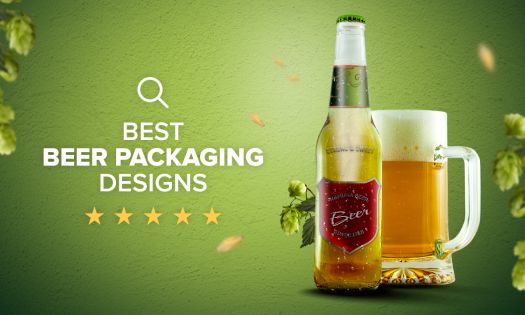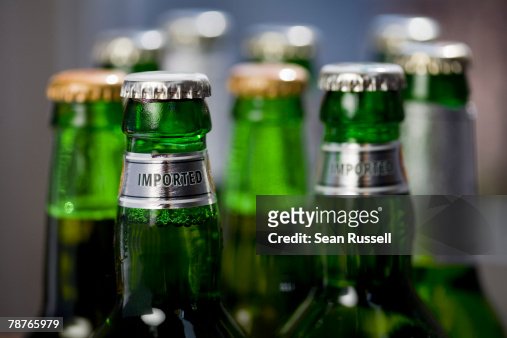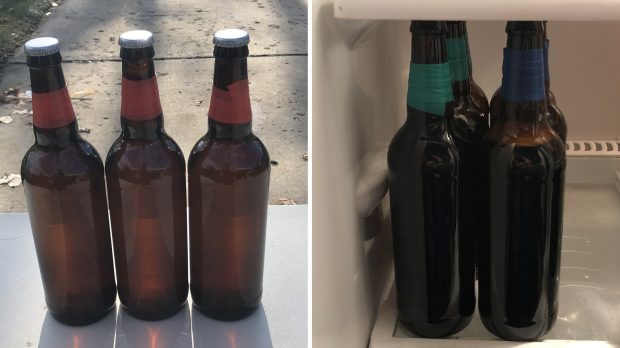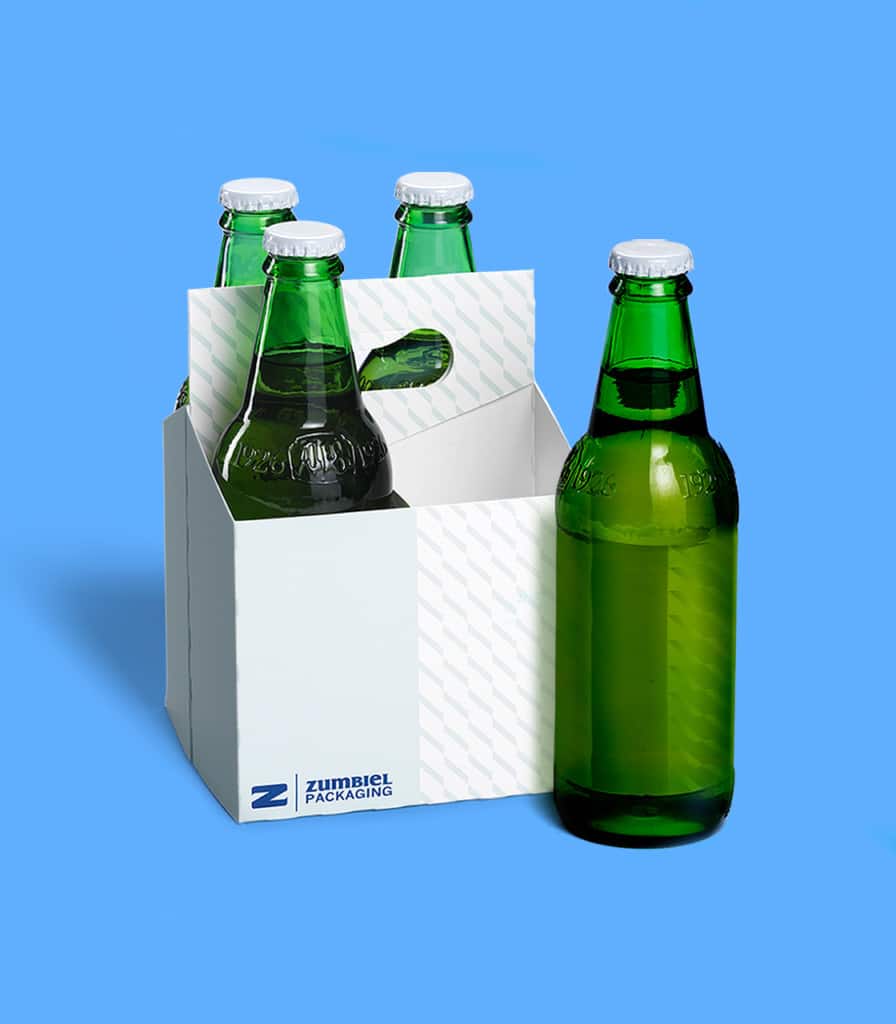Importance Of Beer Packaging

Beer packaging plays a crucial role in the success of a beer brand. It serves as the first impression and can attract consumers to choose a particular beer from the countless options available. The packaging design communicates the brand’s identity, values, and quality to the consumers. It also helps in differentiating the beer from competitors and creating a memorable experience for the consumers. Additionally, beer packaging serves as a protective barrier, keeping the beer fresh and preserving its taste. Therefore, investing in well-designed and durable packaging is essential for breweries to effectively market and deliver their products.
Importance Of Beer Packaging In Branding
Beer packaging plays a crucial role in the branding of beer products. It serves as a powerful tool to communicate the brand’s identity, values, and quality to consumers. The design, color, and materials of the packaging can create a memorable and recognizable image for the brand. It helps to differentiate the beer from competitors and attract consumers’ attention on store shelves or online. Moreover, well-designed packaging establishes a sense of trust and credibility with consumers, influencing their perception and purchase decisions. Therefore, breweries must invest in effective and visually appealing beer packaging to enhance their brand image and market their products successfully.
Factors To Consider For Beer Packaging Design
When designing beer packaging, several factors need to be considered to create an effective and appealing design. These factors include:
- Brand Identity: The packaging design should align with the brand’s identity, showcasing its personality, values, and target audience.
- Product Differentiation: The packaging should stand out on the shelf and differentiate the beer from competitors through unique design elements, colors, and materials.
- Target Audience: Understanding the preferences and tastes of the target audience is crucial in designing packaging that resonates with them.
- Practicality and Functionality: The packaging should be practical in terms of storage, transportation, and serving, while ensuring the beer’s freshness and quality.
- Regulatory Compliance: The design should adhere to legal requirements and information related to alcohol content, warnings, and brand labeling.
- Sustainability: With an increasing emphasis on environmental sustainability, breweries should consider eco-friendly packaging materials and manufacturing processes.
By carefully considering these factors, breweries can create beer packaging that effectively communicates their brand identity and appeals to their target audience while ensuring practicality and compliance with regulations.
Green Beer Bottles In The Brewing Industry

Green beer bottles have a long-standing history in the brewing industry. They are not just a classic choice, but also have become a symbol of craft beer innovation and quality. The green color adds a touch of uniqueness and authenticity to the packaging, catching the consumer’s eye on the store shelf. While green beer bottles have their benefits, such as protecting the beer from harmful UV rays, they also come with drawbacks, like increased chance of light strike. Despite this, many popular beer brands continue to use green bottles, maintaining their iconic presence in the brewing industry.
Historical Significance Of Green Beer Bottles
Green beer bottles have a rich historical significance in the brewing industry, particularly in European brewing traditions. The use of green bottles can be traced back to German beers, where they were first introduced in the 19th century. These green bottles became a symbol of quality and craftsmanship, representing the traditional brewing methods and attention to detail that are synonymous with German beer. Over time, green beer bottles have become iconic in the industry, signifying authenticity and heritage. They continue to be valued for their historical significance and the sense of tradition they bring to the beer-drinking experience.
Benefits And Drawbacks Of Using Green Beer Bottles
Green beer bottles offer several benefits for breweries and consumers. They have a distinct appearance that sets them apart from other packaging options, which can help with branding and marketing efforts. Additionally, green bottles provide some protection against UV light, which can contribute to beer spoilage. However, there are also drawbacks to consider. Green bottles offer less protection against light compared to brown bottles, which can lead to “skunking” and off-flavors in the beer. Green bottles are also more expensive to produce and can be less eco-friendly compared to alternative packaging options.
Popular Beer Brands Using Green Bottles

Many popular beer brands have opted to use green bottles as part of their packaging strategy. One such brand is Heineken, which is known for its iconic green bottle that has become synonymous with the brand. Other well-known brands that use green bottles include Stella Artois, Newcastle Brown Ale, and Rolling Rock. These brands have recognized the visual appeal and association that green bottles have with premium and craft beer, making them a popular choice among consumers. The use of green bottles helps these brands stand out on store shelves and reinforces their brand image.
Analysis Of Popular Beer Brands Using Green Bottles
Many popular beer brands have embraced green bottles as a part of their packaging strategy to appeal to consumers. Heineken, known for its iconic green bottle, has successfully established its brand identity. Other well-known brands such as Stella Artois, Newcastle Brown Ale, and Rolling Rock have also recognized the visual appeal and premium association that green bottles offer. By using green bottles, these brands stand out on store shelves and reinforce their reputation as high-quality and craft beer options. The use of green bottles has become a powerful marketing tool for these popular beer brands.
Consumer Perception Of Beer In Green Bottles
Consumers perceive beer in green bottles as a symbol of quality and craftmanship. The green color evokes a sense of uniqueness and premiumness, making the beer stand out on store shelves. It also creates a sense of tradition and nostalgia, especially as many well-established brands have used green bottles for decades. Furthermore, the green hue adds an element of visual appeal, making the beer more enticing to consumers. Overall, the packaging choice of green bottles positively influences consumer perception and plays a role in their purchasing decisions.
Alternative Beer Packaging Options

Alternative beer packaging options are becoming increasingly popular in the brewing industry. One such option is using brown beer bottles. Brown bottles provide better protection against light, preventing the beer from becoming skunky. Additionally, brown bottles are more readily available and cost-effective compared to green bottles.
Another emerging trend in beer packaging is beer canning. Cans are lightweight, portable, and offer better insulation, keeping the beer fresher for longer. Canned beers are also more environmentally friendly, as cans are easier to recycle compared to glass bottles. Many craft breweries are now embracing canning as a way to stand out and appeal to eco-conscious consumers.
Overall, these alternative packaging options provide breweries with more choices to showcase their beers while ensuring quality and sustainability.
Advantages Of Using Brown Beer Bottles
Brown beer bottles offer several advantages over green and clear glass bottles. First and foremost, brown glass provides better protection against harmful UV light, preserving the quality and flavor of the beer. It acts as a barrier, preventing oxidation and the development of off-flavors. Additionally, brown bottles are more readily available and cost-effective compared to green bottles. They are also less likely to be affected by lightstrike, which can result in a skunky taste. Overall, using brown beer bottles is a practical and efficient choice for breweries to ensure the integrity of their products.
Emerging Trends In Beer Canning
Emerging trends in beer canning are revolutionizing the way beer is packaged and consumed. One popular trend is the use of slim cans, which not only provide a sleek and modern look but also conveniently fit in cup holders and coolers. Another emerging trend is the use of unique and eye-catching can designs, allowing breweries to make a statement and stand out on store shelves. Additionally, there is a growing interest in environmentally friendly packaging, prompting breweries to use recyclable and sustainable materials for their beer cans. These emerging trends in beer canning are reshaping the industry and appealing to a wider range of consumers.
Sustainability And Eco-friendly Practices

Sustainability and eco-friendly practices are becoming increasingly important in the brewing industry. The impact of beer packaging on the environment is a growing concern among consumers and breweries alike. To address this, breweries are implementing sustainable packaging solutions. This includes using materials that are recyclable and biodegradable, such as glass or aluminum cans. Additionally, breweries are focusing on reducing their carbon footprint by implementing energy-efficient processes and using renewable energy sources. These practices not only help protect the environment but also align with the values of environmentally-conscious consumers.
Impact Of Beer Packaging On The Environment
Beer packaging has a significant impact on the environment. Traditional glass bottles, including green bottles, require a large amount of energy to produce. This energy consumption contributes to the release of greenhouse gases and the depletion of natural resources. Additionally, the disposal of glass bottles can contribute to landfill waste and pollution. Green beer bottles, although visually appealing, may not be the most sustainable option. It is important for breweries to consider alternative packaging materials, such as aluminum cans, which are lightweight, easily recyclable, and have a lower carbon footprint. By adopting eco-friendly packaging practices, breweries can reduce their environmental impact and contribute to a more sustainable future.
Sustainable Packaging Solutions In The Brewing Industry
Sustainable packaging solutions have become a key focus in the brewing industry. Breweries are increasingly aware of the environmental impact of traditional beer packaging and are actively seeking more sustainable alternatives. One such solution is the use of eco-friendly materials such as aluminum cans, which are lightweight and easily recyclable. Additionally, breweries are adopting innovative packaging designs, such as biodegradable or compostable options, to reduce waste and minimize their carbon footprint. These sustainable packaging solutions not only benefit the environment but also resonate with consumers who are increasingly mindful of their eco-friendly choices.
Conclusion

In conclusion, green beer bottles have a long-standing tradition in the brewing industry and offer distinct advantages for craft beer brands. Their unique appearance and branding opportunities attract consumers and create a memorable drinking experience. While there are drawbacks to using green bottles, such as light exposure, breweries continue to embrace them for their historical significance and aesthetic appeal. However, with the growing focus on sustainability, the industry is also exploring alternative packaging options, such as aluminum cans and brown bottles. The future of beer packaging lies in finding a balance between tradition, innovation, and environmental consciousness.
The Influence Of Beer Packaging On Consumer Behavior
The influence of beer packaging on consumer behavior should not be underestimated. The choice of packaging can heavily impact a consumer’s decision to purchase a particular beer brand. The visual appeal and aesthetic of the packaging can attract consumers and create a sense of anticipation and excitement. Additionally, the packaging can convey important information about the beer, such as its brand, style, and ingredients. It can also influence perceived quality and value. Craft beer brands often use unique and eye-catching packaging designs to stand out from the competition and create a memorable drinking experience.
Future Innovations In Beer Packaging Technology
Future Innovations in Beer Packaging Technology are constantly being explored and developed to meet the evolving needs of consumers and the brewing industry. One such innovation is the use of smart packaging, which incorporates technology to provide consumers with real-time information about the beer, such as its origin, ingredients, and brewing process. Additionally, there are advancements in sustainable packaging materials, such as biodegradable and compostable options, as well as packaging designs that minimize waste and optimize recyclability. These innovations not only enhance the consumer experience but also contribute to a more sustainable and eco-friendly beer industry.
FAQ About Beers In Green Bottles: Exploring Beer Packaging
Q: Why are some beers packaged in green bottles?
A: Some breweries use green bottles because they believe it helps to protect the beer from light exposure, which can cause off-flavors.
Q: Are beers in green bottles better than beers in clear bottles?
A: While green bottles offer better protection from light than clear bottles, brown bottles are generally considered the best option for preserving beer quality.
Q: What is the most common packaging choice for beers?
A: The most common choice for beer packaging is brown bottles, as they provide excellent protection against light and UV rays.
Q: Do all breweries consider packaging when choosing bottle color?
A: Packaging considerations, including bottle color, vary among breweries based on their specific preferences and branding strategies.
Q: Are there any specific beer styles that are traditionally packaged in green bottles?
A: Some European beer styles, like certain Belgian ales and German lagers, are traditionally packaged in green bottles due to historical reasons and traditions.
